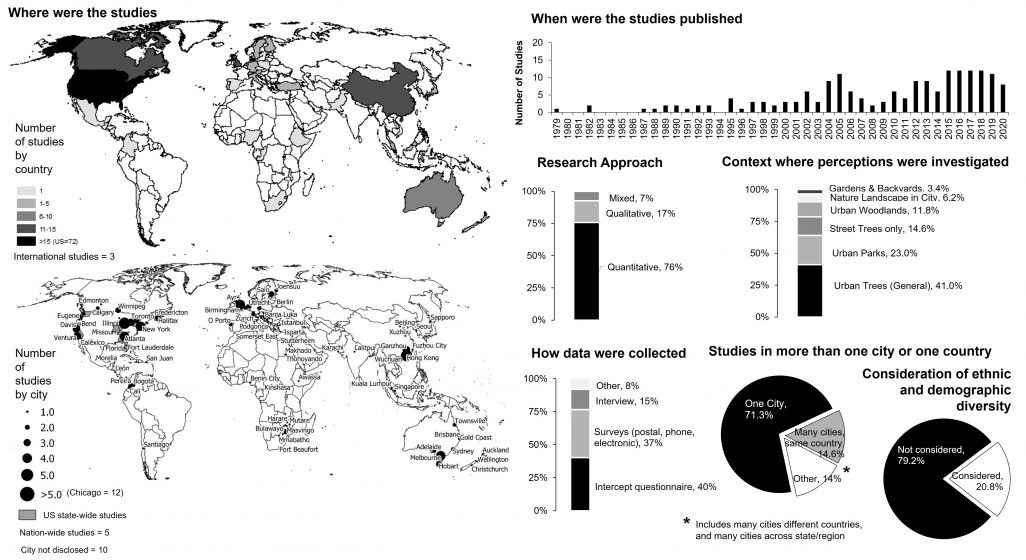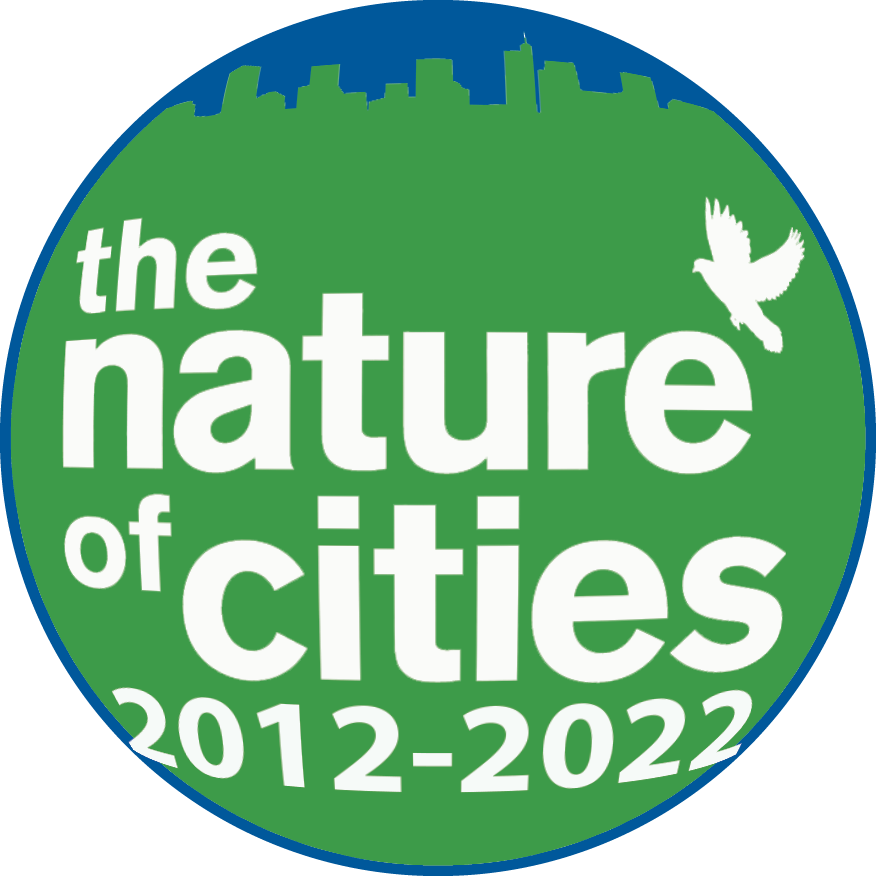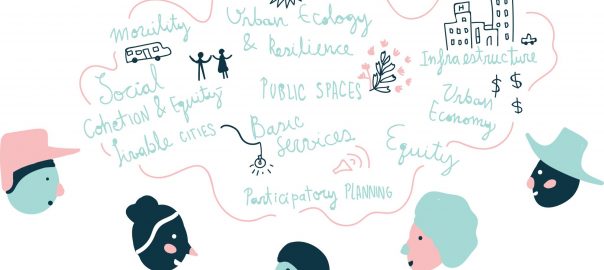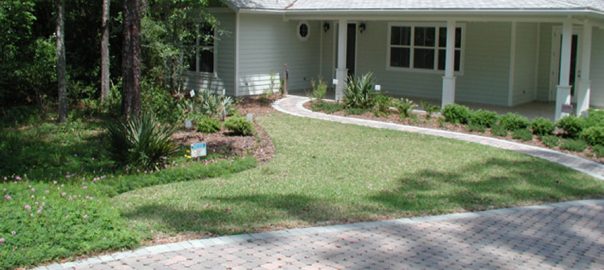Many cities around the world are planning to enhance urban nature. For example, many global cities have promised to plant a million trees, such as Shanghai, New York, Singapore, and Miami, and there are large tree planting initiatives in Uttar Pradesh, Ethiopia, and China, among many others.
But most of these plans to enhance urban nature usually rely on the premise of technical expertise, such as planting the right amount and types of trees, in the right places, to provide the desired benefits.
However, plans to enhance urban nature will not be successful unless these plans reflect what is important to the diverse range of people living in cities today. To understand these needs, we must first understand how the community perceives urban nature and its benefits.
Here we discuss what it means to consider diversity in people’s perceptions of urban nature, with a focus on urban forests and urban trees. We refer to diversity in four ways: 1) the diversity of urban nature places, 2) the diversity of urban people, 3) the diversity of how people perceive things, and 4) the diversity of how we study this perception. This is based on our own recently published research.
We recognize that our lens is tree-centred. We do not talk about other important aspects of urban nature, such as wildlife, gardens, and water bodies. However, this lens provides us with an opportunity to speak more concretely about how people perceive this key element of urban nature, one that is constantly being planted, removed, and distributed in our cities. Ultimately, people perceive nature as concrete elements or landscapes: a tree, a park with trees, a forest, rather than as an abstract concept: a green space, the green infrastructure of the city, the canopy cover of an urban area.
Before we continue, we want to clarify that we write about the science of studying diversity in people’s perception of urban nature, and not its politics. We are interested in understanding how these perceptions are studied by considering diversity. We are cognizant that our research has political implications, some of which we discuss, but our intention is not to discuss diversity in political terms, such as the political issues behind trees, biodiversity, native vs. non-native nature, immigration, ethnicity, and gender, among other aspects.
What do we mean by diversity in people’s perceptions?
Diversity is integral to people’s perceptions of nature as it refers to the diverse experiences people have with urban nature. Perceptions can tell us how people process the information from these experiences. Processing this information is key to activating the benefits we may derive from urban nature, such as reduced stress levels after spending time in a treed area.
A useful way to understand the diversity of how people perceive things is to distinguish more abstract and stable perceptions, such as values (what people consider important) and beliefs (what people think is true), from less abstract and more variable perceptions, such as attitudes (people’s disposition towards something) and preferences (whether people like something). Let us illustrate this.
If we ask you, “How do you perceive the tree in front of your window?”, you may tell us you don’t like that type of tree, or that you really love its fall colours, or that you used to climb it as a child. But if we ask you “How do you perceive all the trees in your city?”, this may activate thoughts about trees being good, or the city being better with trees. The first set of responses are more concrete, more variable perceptions, and the second are more abstract, more stable perceptions. Less abstract perceptions usually tap into the notion of what we like in a particular situation, or people’s attitudes and preferences. More abstract perceptions usually tap into the notion of how important trees are in general, or people’s values and beliefs.
This shows how there is not one way of perceiving something; there are many. It also illustrates how difficult it is to simplify people’s perceptions or generalize all perceptions across all people and all situations. The previous example is a theorized and ideal situation with direct, simplified answers. In reality, a person responding to these questions may mix different types of perceptions depending on what they want to talk about. Calling perceptions values, beliefs, attitudes, or preferences is how to codify things for research purposes, but people do not think in such strict cognitive codes.
Diversity can also refer to the various forms of urban nature. Different places with trees may prompt very different human meanings and are likely to be associated with very different perceptions. Trees are found in parks, streets, backyards, in natural forested areas, and sometimes on rooftops (Figure 1). If we ask someone how they perceive a street tree, a tree surrounded by other trees, a tree that they planted, or a fruit tree, the answer may be different. Again, this is how we codify nature for research purposes: people may perceive things in different ways, such as perceiving the landscape more than its elements, or vice versa.

Diversity also refers to the diversity of who is perceiving (Figure 2). Many cities are diverse in their people, with many ages, genders, sexualities, abilities, cultural identities, nationalities, ethnicities, and religions living next to each other. Many Western cities today are ethnically and culturally diverse mostly due to recent immigration. For example, Toronto boasts a foreign-born population of about 50%. In Australia, 25% of the population is foreign-born. In many European cities, this is about 15-20% or higher. Read an interesting post in TNOC about urban nature in multicultural cities. So, to study people’s perceptions, we can choose to recruit people into studies who represent certain populations that represent certain age, gender, cultural background, or other minority demographics, or sample with an intention to generalize across majority demographics.

Finally, diversity can also refer to the ways we study people’s perceptions. Decisions about which perceptions to measure, what is being perceived, where to measure these perceptions, and who to study, are fundamental to how we study things. We can use techniques such as surveys, photos, field trips, personal diaries, and group conversations to capture empirical data, as well as recruit different amounts of people, and analyse answers in different ways depending on what we want out of the data.
What the literature says
We asked the following questions of the literature on people’s perceptions of urban forests or urban trees:
- What urban forest places are investigated?
- What methods of data collection are used?
- How are people sampled and recruited?
- What types of urban forest perception responses are examined and how is the diversity of responses treated?
We collected 178 articles using academic databases by using systematic, replicable searches. All these studies were relevant to people’s perceptions of urban forests or urban trees. To analyze the articles in the collection we developed a classification mechanism to identify patterns on how diversity was treated across studies. We also analyzed the text of the articles using text analysis algorithms with the goal of generating semantic maps based on the relationship of terms and concepts in the articles.
Figure 3 provides an overview of the content of the articles. Most studies took place in the US, although there are studies around the world. Most studies have been published recently. Most studies focused on asking people about what they thought about trees in general or in a park context. Most studies used surveys with predetermined answers that pre-defined what people were supposed to perceive. Few of the studies examined perceptions in more than one city or country. While most studies considered demographics and reported demographic profiles, these considerations were restricted to gender and limited to the differences between (cis) men and women. Only a fraction of the studies examined people in the minority of the countries and regions involved, such as ethnic, racial, gender, and age (e.g., seniors, children) minorities. And finally, most studies only focused on people’s positive perceptions or perceptions of benefits.

What it means
Overall, our results demonstrated that the current research on people’s perceptions of urban forests and urban trees does not consider diversity adequately. It is narrowly focused on certain perceptions, one method to capture these perceptions, and minimal considerations of demographic diversity.
Deriving practical implications, such as planting the right type of tree in the right place to provide the right benefits, has been a primary motivation of the research on people’s perception of urban nature. However, our analyses show that using the existing evidence to apply actions broadly across all people and situations can have profoundly negative impacts for people and urban nature. For instance, the studies we reviewed investigated people’s perceptions of trees in different situations, both as concrete elements (specific trees in specific streets or parks) and as abstract notions (all the trees in a city). These different contexts mean that people are perceiving different things, making it very difficult to generalize how people give meaning to trees in cities and deduce what is the best tree to plant in which situation. Many of the studies we examined were motivated either by including trees in urban planning and design or by identifying how people assumed to represent the majority give meaning to urban trees, rather than by coming up with the best way of dealing with urban trees in specific situations and by specific people.
A lot of research in urban nature today is focused on how unevenly nature is distributed across the city. While this can help us understand issues of resource distribution and where to place management efforts, a complementary, but often overlooked, aspect of this is giving people a platform to express how they think, feel, and behave with urban nature. Failing to recognize these diverse ways of thinking, feeling, and behaving, can be detrimental to our plans of enhancing urban nature. For example, failing to recognize how different people perceive urban nature may potentially replicate structural racism and may perpetuate normative and inaccurate beliefs about how people perceive the worth of urban nature. In other words, there is a risk that the way we study people’s perception of urban nature today can (re)produce colonial Anglo- and hetero-normative, as well as ableist perspectives in the ways we manage urban nature. It is not just remiss of researchers to overlook this diversity; it risks reproducing non-diverse and unjust forms of domination that exclude nature and people in cities.
Recently, many studies have criticized the literature on people’s perception of urban trees. For instance, some authors have conceptually argued against notions such as:
- everybody loves trees in all situations;
- people’s perceptions could be more positive if people were only more knowledgeable about the benefits of trees;
- people only think about the aesthetic value of trees instead of their environmental, ecological, and economic value;
- the public cannot be a reliable source of what a tree is worth and that this is better to be left to the experts and the scientists.
Our recent review and analysis of the literature gives an empirical basis of these criticisms and can help change these notions into the following ones:
- People may perceive urban trees in similar ways, but some of these perceptions may also depend on the situation or the person.
- Knowledge of the benefits of trees may change some, but not all, perceptions since many perceptions are more fundamental and abstract and developed through lived experiences.
- Not everybody holds normative positive beliefs about urban trees.
- People value urban trees for many different reasons including aesthetic, cultural, ecological, economic, environmental, health, psychological, and social reasons.
- The public is always a reliable source to understand what makes urban trees important to urban communities.
We also think that a deeper examination of diversity in people’s perceptions about urban nature is needed. We live in an era where integrating diverse nature and diverse human experiences is crucial for cities to better plan their future sustainability. Understanding such diversity is a necessary step in connecting humans to the natural environment and facilitating biodiversity planning and decision-making. Such information can inform better approaches to meet community needs and promote the wide range of benefits from urban nature.
Efforts to advance this research should include: 1) stronger interdisciplinary collaborations between the natural and social sciences; 2) a clear definition of what is being perceived, how it is being perceived, and who is perceiving it; and 3) addressing the diversity of perceptions, places, people, and methods with intention. Diversity should become a core goal of researchers and practitioners alike.
Camilo Ordóñez Barona and Janina M. Kowalski
Melbourne and Toronto
Acknowledgments
Many thanks to our colleagues Drs. Jason Byrne (University of Tasmania), Dave Kendal (University of Tasmania), Kathleen Wolf (University of Washington), and Tenley Conway (University of Toronto) for their support and co-authorship of the original work referenced in this article.
About the Writer:
Janina Kowalski
Janina Kowalski (she/her) is a PhD candidate at the University of Toronto. Her research focuses on the governance, accessibility, and human-nature interactions of urban food trees.
About the Writer:
Camilo Ordóñez
Camilo is a research associate at the University of Toronto. His interdisciplinary research is about the social and ecological issues of nature in cities. He works in Canada, Latin America, and Australia.










Add a Comment
Join our conversation